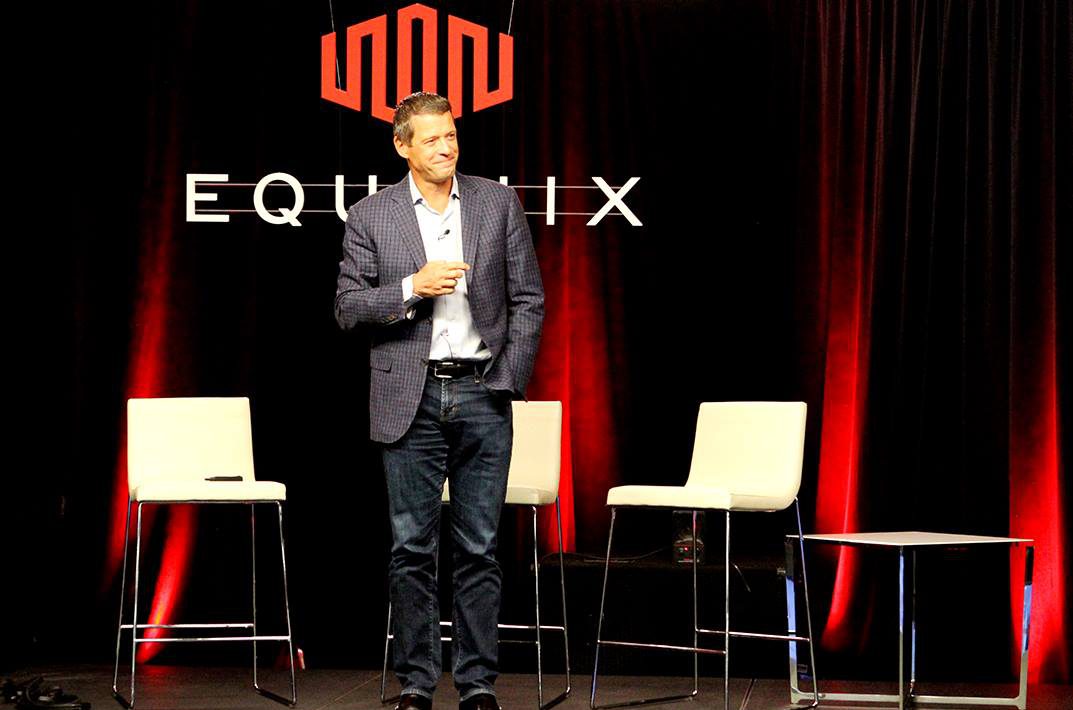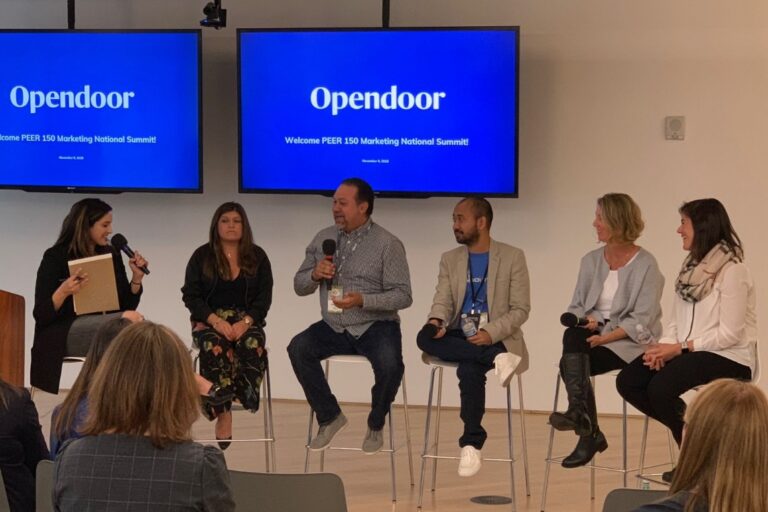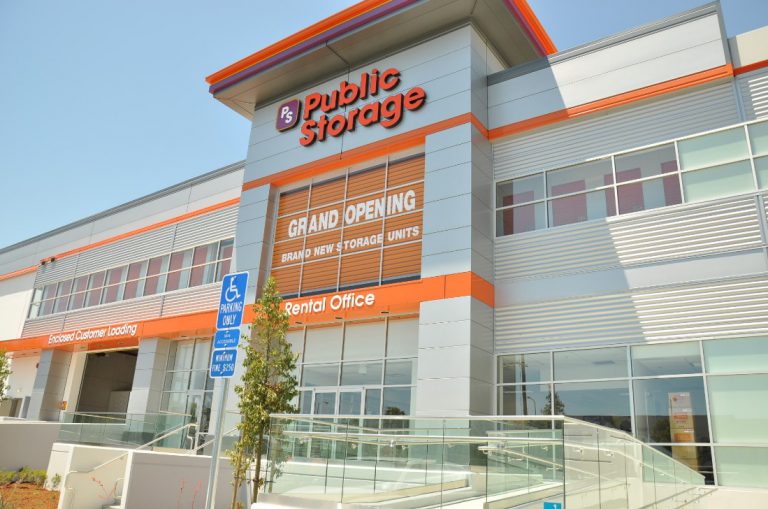Truth Penetration into “Wework’ Style for Data Center Company Equinix
Equinix is an American multinational company headquartered in Redwood City, California, that specializes in Internet connection and data centers. The company is a leader in global colocation data center market share, with 205 data centers in 25 countries on five continents. Equinix has a unique culture and an exciting future.
Equinix was founded in 1998 by Al Avery and Jay Adelson, two facilities managers at Digital Equipment Corporation.
From the start, Equinix saw data centers as places where the fragmented elements of the early Internet and the companies that forged those elements came together to achieve their greatest business ambitions. Equinix interconnects the world, sparking new opportunities that are only possible when companies come together. They strive to be respectful stewards of the environment, to invest in their communities, and to improve the places where they live and work, as well as the places touched by the technology they enable.
The firm promoted its data center platform as a neutral place where competing networks could connect and share data traffic. The firm focused on expanding interconnection from its inception, to capitalize on the so-called “network effect,” through which each new customer would broaden the appeal of its platform. It expanded to Asia-Pacific in 2002 and Europe in 2007, and then to Latin America in 2011 and the Middle East in 2012.
It is listed on the NASDAQ stock exchange under the ticker symbol EQIX, and as of today, it had approximately 8,400 employees globally. The company converted to a real estate investment trust (REIT) in January 2015.
#1. Replicate Network Interconnect Success with Interconnection of Clouds
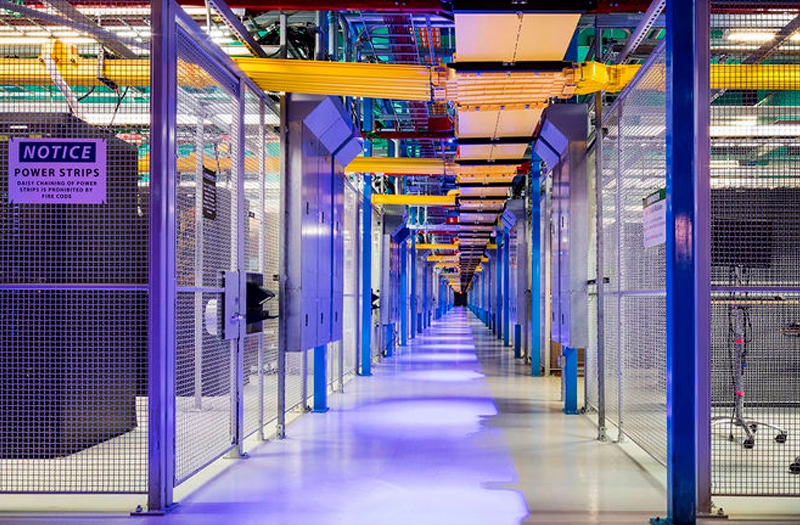
Revenue growth from interconnection services has outpaced the rate of overall revenue growth for Equinix, and providing secure private access to public clouds, such as Amazon Web Services, Microsoft’s Azure or IBM SoftLayer, is the fastest-growing segment of the company’s interconnection business.
While reporting rapid growth in interconnection services revenue and successes in building out a cloud provider ecosystem in its data centers, the company reported a year-over-year drop in earnings per share, missing analyst EPS expectations for the third quarter.
Equinix built its global data center empire by enticing companies to connect to each other’s networks inside its facilities, and its executives now hope that the next stage of growth will come from interconnecting clouds. “The emergence of the cloud ecosystem represents a transformational opportunity,” Equinix CEO Stephen Smith said on the company’s third-quarter earnings call Wednesday afternoon.
#2. Acquire a Portfolio of Data Center Sites to Fund the Deal Amid COVID-19 Pandemic
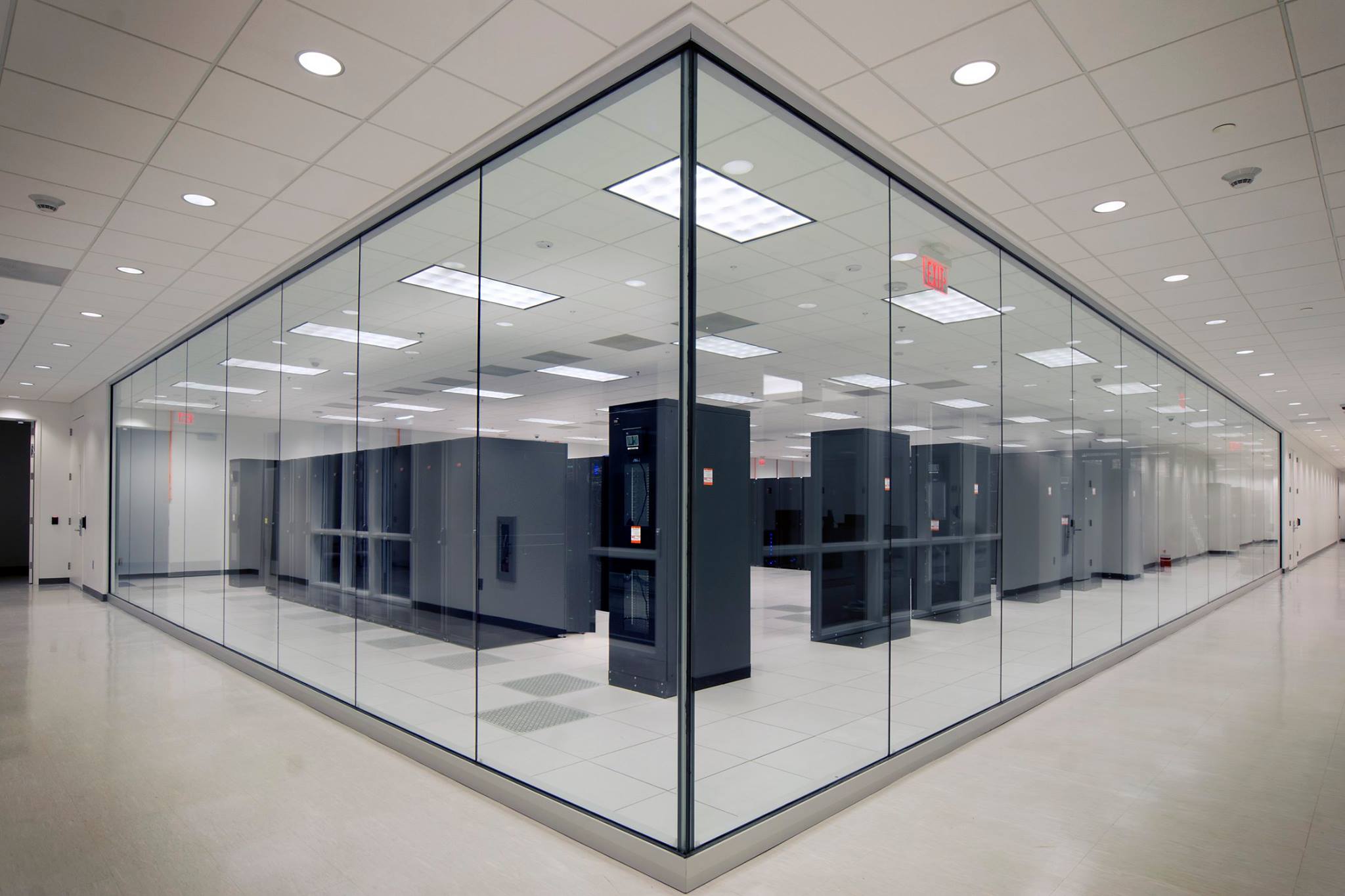
Colocation giant Equinix is “in advanced discussions” to acquire a portfolio of data center sites and has announced plans to sell $1.25 billion in common stock to fund the deal, the company said today.
The announcement comes amid an accelerated merger and financing environment created by the COVID-19 pandemic, as some companies seek to rapidly complete deals in progress, while others line up financing to ride out the jarring business disruption from lockdowns. Still other companies are weighting opportunistic acquisitions, as some providers contemplate exit strategies in a changed investment landscape.
Equinix said that if it completes the potential acquisition, it will use a portion of the proceeds from the stock the offering to fund the deal, and the remainder for “general corporate purposes,” including capital expenditures, working capital and reducing debt. If the deal falls through, all of the proceeds will go to general corporate purposes, leaving Equinix a larger war chest to build or buy more data centers.
What’s clear is that Equinix sees this as a moment of opportunity among surging demand for network capacity, driven by the massive societal shift to online services during the COVID-19 pandemic.
“We’re seeing a magnification of the role that Equinix plays not only for our customers, but in the basic operation of our society, Equinix CEO Charles Meyers said during the company’s earnings call last week. “The massive work-from-home experiment in which we find ourselves, has created a spike of near-term demand from a variety of customers, much of which we believe will sustain even as we calibrate on a new normal.
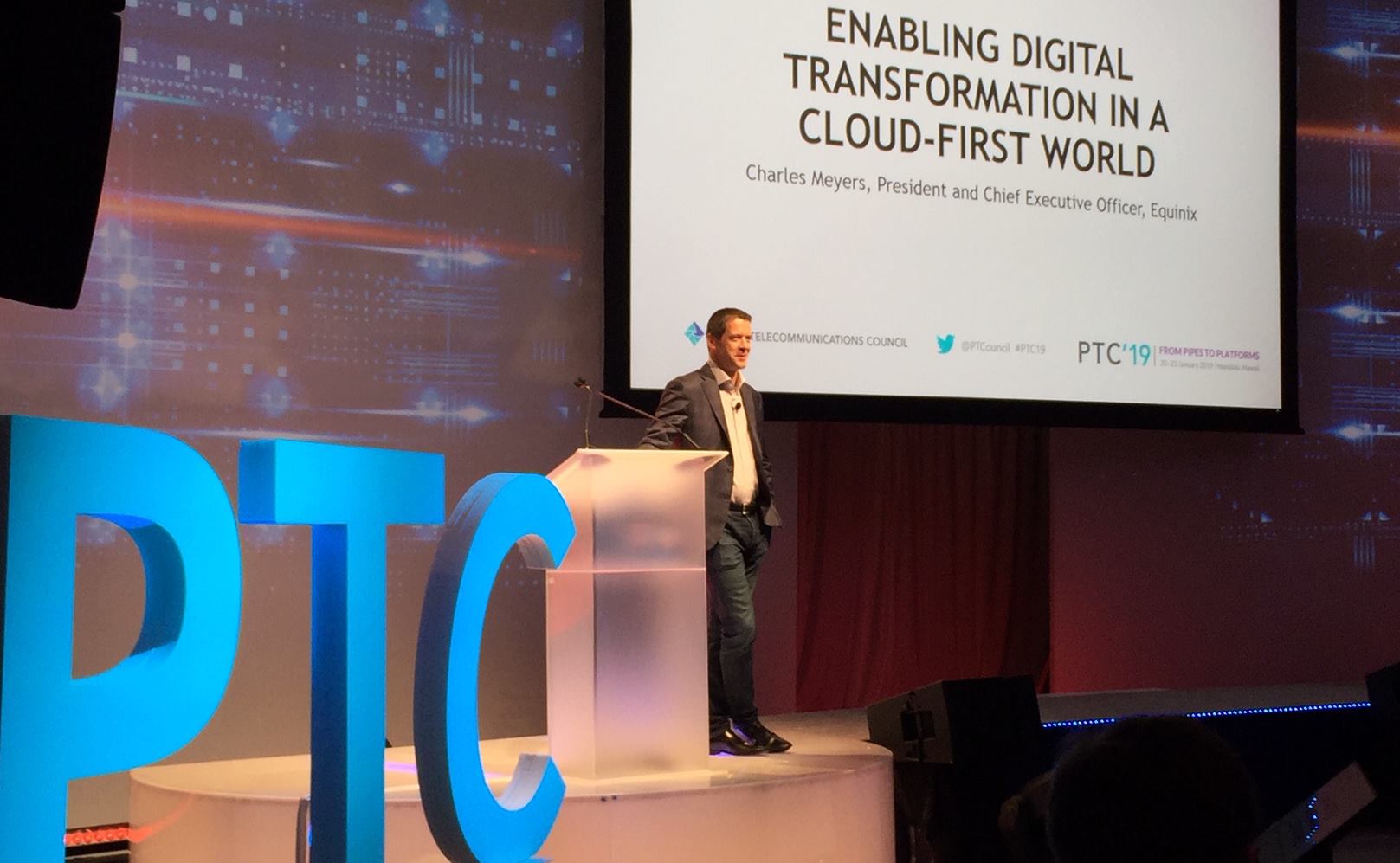
“Perhaps most importantly, the unique characteristics of this particular crisis have increased the resolve we see from customers relative to their focus on digital transformation as a long-term priority, and have highlighted the relevance of Equinix in supporting these efforts,” Meyers added.
Equinix has built a global data center empire, becoming a lynchpin of the Internet and digital business. With 200 data centers and 21 million square feet of space deployed across the globe, the company is a colocation colossus. Equinix focuses its infrastructure on the core of the Internet, building clusters of data centers around major network intersections like Northern Virginia, Silicon Valley, Chicago and Dallas.
As a colocation specialist, the company historically offered space in cages and cabinets where customers could deploy their own IT equipment. As Equinix moves beyond “power, pipes and ping,” it will reshape the competitive landscape for other colocation providers, further blurring the lines between traditional business models.
#3. Disrupting Cloud-Enabled World by Three Components
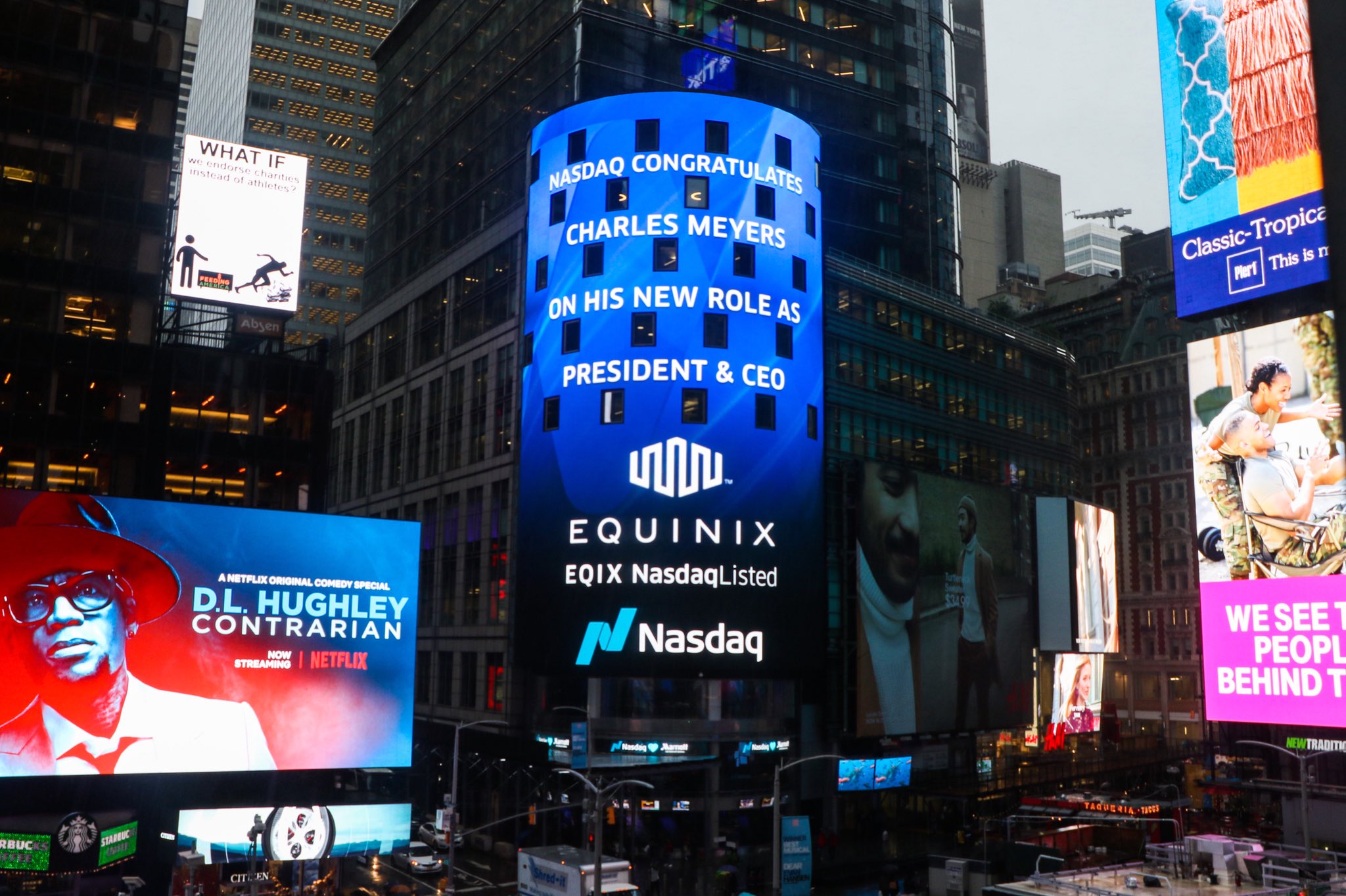
At the core of its business is interconnection: the process of managing the intersections of networks that enable global data traffic. Equinix data centers are where the networks meet, creating business ecosystems that exchange data and gain value with each new participant.
As it enters 2019, the company is focusing on opportunities in hyperscale data centers and enterprise computing, while sizing up where it may want to play in edge computing.
Equinix is looking to press its advantage across all its markets. The company is coming off an eventful 2018, which began with the departure of CEO Steve Smith, who resigned suddenly after “exercising poor judgment with respect to an employee matter.” In September the company named Equinix veteran Charles Meyers as its new CEO, and Meyers has embraced the position with energy, spending his first 100 days visiting data centers, meeting staff and seeking to reinforce a culture of service – the “Magic of Equinix,” as Meyers calls it.
“While the world is changing at a faster pace today than ever before, Equinix continues to sit at the intersection of some of the most disruptive and critical technology trends of our time,” Meyers said in a 100-day message to the company. “We will continue to evolve, remaining laser-focused on building our global platform to help customers reach everywhere, interconnect everyone and integrate everything.”
Prior to becoming CEO, Meyers was responsible for charting the Equinix strategy for the future, defining opportunities for a “cloud-first” world for the next 20 years. So, what are those opportunities for expansion and growth? They include ambitions at the edge, the cloud and the enterprise.
Component #1: The Edge
Equinix has always focused on the core of the Internet, building clusters of data centers around major network intersections like Northern Virginia, Silicon Valley, Chicago and Dallas. Steve Madden, Senior Director of Global Solution Marketing at Equinix, notes that 12 global metros account for 90 percent of Internet traffic, and for Equinix, the prime directive is extending on-ramps and off-ramps to bring more traffic through these major hubs.
“The Internet is an on-ramp and off-ramp to the interconnection fabric,” said Madden. “We find that the shift in business involves the transfer of data, and it starts and ends with interconnection first. The growth in data has become a real management problem.”
So how does the company think about edge, the buzz-driven new vision for distributed data centers to support new technologies – such as autonomous vehicles, the Internet of Things, 5G wireless and distributed AI applications – that require low latency and close proximity to users.

In recent years, Equinix has begun to build in new markets where it is seeing data growth. Recent examples include data centers in Oman, Bulgaria, South Korea and Hamburg, Germany.
“We’re spreading out to places we’ve not been,” said Madden. “We’re struggling to keep up with international demand.”
In some cases, this demand is driven by the evolution of subsea fiber routes. That was the case in Hamburg, where Equinix sees an opportunity connect with subsea routes from the North Sea.
The expansion into Seoul is timed to support emergent 5G networks in South Korea, which has one of the world’s most advanced high-speed Internet economies.
The initial impact of 5G will likely be felt in major cities, but an emerging ecosystem is targeting the opportunities 5G may create near the edge of the Internet, including second-tier markets and telecom towers.
“We think about the definition of the edge all the time,” said Madden. “We’ve talked about what happens with 5G and towers and cars. There IS probably something Equinix is going to do in response.
“We’ve looked at how much farther out the edge needs to be, but it’s just going to amplify the need for what we already do,” Madden added. “It’s still an ecosystem stack, especially in IoT. The edge is getting bigger, but the cloud is too far away.”
Component #2: The Cloud
Equinix wants to bring the cloud closer, and that will include new hyperscale-optimized data centers on its campuses. In late 2017 Equinix created a Hyperscale Infrastructure Team (HIT), which is now headed by Jim Smith, an industry veteran who has built data centers for Microsoft and Digital Realty.
The company has moved deliberately thus far, placing hyperscale customers in several suburban London data centers (including one that was acquired from IO). The new Paris 8 facility will be the first Equinix data center to employ the company’s hyperscale design. But growth for the HIT initiative will likely accelerate later in 2019.
“We probably have way more demand in the pipeline than we would be able to or want to satisfy,” Meyers said in the company’s most recent earnings call. “Our posture relative to the large footprint hyperscale demand is that it is something that we want to participate in because we believe is accretive to our premium retail strategy. We’ll be selective about participating there.”
“The big cloud providers would like larger data centers,” said Madden. “The real estate is still highly valuable. You don’t want to choke the ecosystem growth, so we have to think of everybody.”
Meyers is clear that Equinix is looking to fund some of its hyperscale growth through joint ventures with investors. This approach capitalizes on strong investor interest in the sector and allows Equinix more flexibility with its balance sheet. The company is taking time to find the right JV partner.
Component #3: The Enterprise

Equinix has emphasized expanding its enterprise business as more companies move aggressively to compete as digital businesses. In a 2016 conference, Smith announced a company goal to increase its enterprise customer base exponentially in the next decade. Smith estimated the total addressable enterprise market at 350,000 globally and projected Equinix could land as many as 60,000 enterprise customers by 2026. Equinix’s total customer base at the end of 2016 was about 8,500, including about 2,250 enterprise customers. Industry observers said a challenge for Equinix would be appealing to customers who did not know they needed what Equinix offers: “Courting enterprises is more difficult than serving Equinix’s traditional customer base, consisting of financial, network, media, and cloud companies. These customers basically knew what they wanted from Equinix, and all Equinix had to do was deliver.”
Equinix says its appeal to the enterprise market is based on its network density, cloud expertise and what it says is a growing enterprise need to obtain services from multiple cloud providers just to execute routine business. It argues the only way the enterprise can meet customer expectations is with what it called an “interconnection first” mindset that prioritizes moving closer to end users and enabling faster data processing and analysis at the “edge of the network.” The company has devised what it calls an “edge strategy” for the enterprise, named the Interconnection Oriented Architecture. This strategy is designed to allow the enterprise to move closer to end users by capitalizing on Equinix’s global footprint and the access it provides to multiple networks and cloud providers. The firm also said its interest in cultivating enterprise growth was to ward off the threat presented by the largest public cloud providers, all of whom it hosts in its data centers.
Some analysts have argued that the continued growth of the public cloud giants – such as Amazon Web Services and Microsoft Azure – would eventually lead them to abandon third-party colocation providers like Equinix, and build their own data centers and take advantage of economies of scale. In response, Equinix has positioned its facilities as meeting places where enterprises could directly access as many public cloud services as possible and build customized and business-critical applications. The company believes that attracting more enterprises as they begin relying on multi-cloud strategies will further establish Equinix as an essential interconnection point between the enterprise and the public cloud, including its largest providers.
#4. Acquisition of Packet’s Bare Metal Tech: The Importance of Edge Computing
Equinix said it completed the acquisition of bare metal and edge computing startup Packet, and also disclosed that it paid $335 million in the deal. Meanwhile Zachary Smith, former Packet CEO and co-founder, is now managing director of the interconnection giant’s bare metal business.
The purchase highlights the importance of edge computing, even for a data center behemoth like Equinix with more than 200 data centers in 55 markets globally. But these are typically huge colocation facilities located in major internet hubs such as Silicon Valley, Dallas, and Ashburn, Virginia. And this is why a small, 5-year-old startup like Packet becomes key to colocation and interconnection market leader Equinix.
“This is Equinix being extremely self-aware,” Smith said, using an “Of Mice and Men” analogy. “Lennie doesn’t kill the rabbit.”
“This acquisition really felt like just a natural progression,” Smith said. “The value proposition is the same one that is working so well for Equinix today, which is interconnected mutual ecosystems at global scale is something that people want for their digital businesses. Being able to do that with less friction, easier, and in a more automated way — who wouldn’t like that?”
Packet’s bare metal automation technology automates physical servers and networks without the use of virtualization or multi-tenancy. This allows companies to deploy workloads on single-tenant hardware and to use geographically distributed infrastructure, which can be deployed close to the end user for performance and compliance reasons. By purchasing Packet, Equinix can now offer bare metal as a service, which allows its customers to rapidly deploy physical infrastructure at the edge.
“Equinix has been looking at this capability for a while now, and how do we really make the Equinix value proposition around interconnection and infrastructure easier to consume, in a more frictionless way, and in a more software-defined way,” said Jon Lin, president of the Americas at Equinix.
Over the summer, Equinix rolled out its new Network Edge service, and adding Packet bare metal technology will allow customers to deploy isolated hardware in edge locations while also taking advantage of interconnection in their hybrid and multi-cloud environments, Lin added. And it gives them speed.
In addition to appealing to enterprise customers, bringing Packet into the Equinix fold also benefits service providers, Smith said, citing Packet’s work with Sprint. Packet provides the infrastructure for Sprint’s Curiosity IoT platform.
“We’ve got a lot of success in the 5G ecosystem and helping people with their edge deployments like what we’ve done with Sprint’s Curiosity platform,” he said. “Service providers of all shapes and sizes really have an opportunity to leverage this mutual infrastructure as an accelerant to their own value propositions.”

